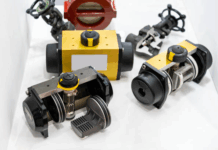Air source heat pumps (ASHPs) are becoming a popular choice in the UK for energy-efficient heating and cooling in homes. By drawing heat from the air outside, even in colder weather, these systems offer a reliable and sustainable alternative to conventional boilers and heating units. However, like all mechanical systems, air source heat pumps can experience issues that affect their performance.
While they are generally low-maintenance, neglecting routine checks can lead to inefficiencies or even failures. This post examines five of the most common issues encountered in air source heat pumps and explains how regular servicing can help prevent them.
1. Reduced Heating Efficiency in Cold Weather
One of the more frequent concerns users have is a noticeable drop in heating performance during the colder months. Air source heat pumps do rely on outside air as a thermal energy source, so as the temperature drops, the system must work harder to extract sufficient heat. This can cause the unit to struggle, particularly in sub-zero conditions.
Why does it happen?
- The heat pump may ice up, limiting airflow.
- The defrost cycle may not function properly.
- The system may be undersized for the space it is meant to heat.
How servicing helps:
Routine maintenance checks can identify problems with the defrost cycle and ensure the system is not restricted by ice or debris. An engineer can also assess whether the unit is operating within its expected performance range. If not, they may recommend adjustments or settings optimised for colder climates.
Servicing teams, such as those available at https://servicemy.co.uk/, conduct efficiency checks that help identify when a unit is not coping well with cold conditions, which may otherwise go unnoticed until indoor temperatures begin to drop.
2. Unusual Noises or Vibrations
Although most air source heat pumps operate quietly, strange sounds such as grinding, buzzing, or rattling can be signs that something is wrong. These sounds may originate from the fan, motor, or internal components.
Common causes include:
- Loose parts or fittings.
- Obstructions in the outdoor fan.
- Worn-out motor bearings.
- Debris is causing an imbalance.
How servicing helps:
A qualified technician will inspect and tighten any loose parts, clear the fan unit of leaves or debris, and check for signs of wear in moving components. These are not tasks a typical homeowner should undertake without training, as incorrect handling can worsen the issue.
Regular servicing can catch these issues early, preventing minor mechanical faults from developing into more serious (and costly) repairs. A once-annual visit is often sufficient, especially before the heating season begins.
3. Ice Build-Up on the Outdoor Unit
While it’s normal for a bit of frost to form on the outdoor coil during cold weather, excessive ice accumulation can cause serious performance problems. It restricts airflow, reduces efficiency, and can damage internal parts over time.
What causes it
- A malfunctioning defrost cycle
- Blocked air filters or restricted airflow
- Low refrigerant levels
- Inadequate drainage around the unit
How servicing helps:
Technicians will inspect the defrost cycle to ensure it activates properly when ice begins to form. They will also check for drainage issues that might lead to water pooling and freezing around the base of the unit.
Importantly, a service includes cleaning or replacing air filters and inspecting refrigerant levels, both of which are crucial in preventing icing. Regular servicing through platforms such as Service My offers a structured way to maintain these checks without relying solely on visual clues that may appear too late.
4. Inconsistent Indoor Temperatures
If some rooms in the house feel colder than others, or if the system seems to heat unevenly, it could indicate a problem with the heat distribution or control mechanisms. This issue affects both comfort and energy efficiency.
Possible reasons include:
- Thermostat misplacement or malfunction
- Blocked or leaking ducts
- Poorly balanced system
- Incorrect settings in the control system
How servicing helps:
During a service visit, the technician will test the thermostat for accuracy and ensure it is appropriately positioned. They may also inspect the ducting (if applicable) for leaks, blockages, or poor insulation.
If your home uses multiple zones for heating, the technician can confirm whether the system is correctly balancing demand between areas. With modern smart thermostats and controls, software updates or adjustments to settings may also be necessary.
5. Refrigerant Leaks and Low Pressure
Refrigerant is the lifeblood of an air source heat pump system. It circulates through the unit to absorb and release heat. If there is a leak or the system pressure drops, performance will decline significantly, and in some cases, the pump may stop functioning entirely.
Symptoms of refrigerant issues:
- Reduced heating or cooling.
- Ice on the evaporator coil.
- Hissing sounds.
- The system is shutting down frequently.
How servicing helps:
A servicing visit includes pressure testing and leak detection. If refrigerant levels are low, the engineer can locate the source of the leak and repair it before recharging the system.
It’s essential to note that handling refrigerants should be performed by a certified professional. Servicing not only maintains system performance but also ensures compliance with environmental regulations governing refrigerant gases in the UK.
The Role of Preventive Maintenance
These common issues highlight the importance of proactive maintenance. Air source heat pumps are designed to operate efficiently for many years, but, like any mechanical system, their longevity depends on how well they are maintained.
Benefits of regular servicing include:
- Improved energy efficiency
- Reduced repair costs over time
- Longer equipment lifespan
- Better indoor comfort levels
- Compliance with warranty requirements
It’s often said that prevention is better than cure, and in the case of ASHPs, this holds true. Regular small checks and adjustments can help avoid significant system failures, which are far more expensive and inconvenient.
Final Thoughts
Air source heat pumps are a smart choice for heating and cooling in UK homes, particularly given the increasing interest in low-carbon technology. However, they are not entirely “fit and forget”. Understanding the typical problems they face and how regular servicing prevents them can help homeowners maximise the value of their investment.
A well-maintained system offers better reliability, efficiency, and comfort throughout the year. For those unsure where to start, connecting with qualified professionals ensures that your unit stays in top condition, avoiding the pitfalls that come from neglect.









